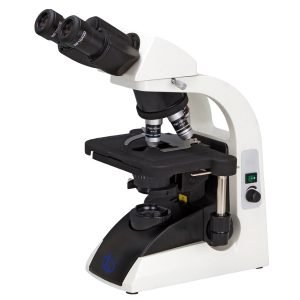Scanning electron microscopy is a method capable of structuring a great complexity of materials, such as nano-structured, metal alloys, polymers, minerals, fibers, thin films, biomaterials, and in some cases samples with high moisture content, is very versatile, allows to supply information and surface characterization of organic and inorganic materials, showing morphological information, quick chemical composition, effective and parallel of the analyzed material. Its variability, is given in its high perception (from 20 to 50 Å), of three-dimensional images, product of its great depth of focus.
They also work with an electron beam, to create the profile in high vacuum conditions (10-6 torr), the essential parts of the microscope are electron column, control console and imaging system.
Scanning Electron Microscope Performance
Scanning electron microscopy is a non-destructive determination practice that provides cellular information and chemical structure of materials. Using this equipment, scientists can work with conductive, non-conductive, dry and wet samples.
In this way, their functions are structured as follows:
- At the top of the spine, the electron emitter, which produces an electron beam, is located and is conducted by electromagnetic lenses.
- It has a deflection system, which moves the beam in the form of a “zig zag” to make a surface sweep of the material, causing signals by the interaction of the beam with the specimen. These signals (secondary rays, retro-scattered rays and X-rays among others), are connected by detectors, and each of them provide specific information, the secondary rays, produce SEI (Secondary Electron Image) images of surface morphology of the sample, the electrons backscattered, transmit images with different brightness, depending on the chemical composition and topography of the surface BEI (Backscattered Electron Image), and the X-rays, EDS (Energy Dispersive Spectrometer) obtain adjective information of chemical composition of the sample, quickly and efficiently, performing a semi-quantitative analysis of the detected elements.
Usage Applications
Scanning electron microscopy is a technique that serves to examine the conformation of solid materials of all types (metals, ceramics, polymers, biological, etc.), except for liquid samples. The resolution of the equipment allows us to experiment with typologies of the raw material, on a very small scale. Likewise, all chemical compounds with atomic numbers greater than four can be shown in a qualitative and semi-quantitative manner. It has advantages, according to the ease of preparing samples, since only in special cases can it become laborious.
Typical applications of this type of equipment are: cross sections, preparation of ultrafine samples for TEM (lamelas), three-dimensional reconstruction of the volume of a specimen and electronic and ionic lithography.
Analysis and study of biological, organic and inorganic samples by means of high resolution scanning electron microscopy:
- High resolution topographic images by SE (Secondary Electrons).
- Images of composition or chemical distribution by Retro Dispersed Electrons (BSE)
- STEM (sweep-transmit) images.
- Analytical profiles and distribution maps of elements by EDX (Dispersive Energy of X-Rays).
- Maps of crystalline and textural orientations by EBSD (Backscattered Electron Diffraction).
In addition, for services available by combining electronic and ionic columns:
- Execution of cross sections, for analysis and definition of samples in depth.
- Production of ultrafine samples or lamellae, for TEM (Transmission Electron Microscope).
- Three-dimensional restoration of the volume of a specimen.
- Electronic and ionic lithography at nanoscale.
Kalstein brand microscope
At Kalstein, we are equipped with the most extensive technology in trained laboratory equipment, to meet all the demands of our customers. In this case, we offer you the Microscopes, belonging to the YR models, with very attractive general characteristics, such as: High quality optical components, which provide a sharp and striking contrast image, ensuring a flat image at great depth of field. It has LED light for incident and transmitted lighting, which provides uniform illumination, and its lifetime can reach up to 6000 hours. This device is the ideal instrument for industrial assembly, inspection and teaching, with a complete set of eyewear, lenses and accessories. HERE
We are manufacturers and we have the best advice, so that your purchase is the ideal and at excellent prices. For more information, visit our website HERE

